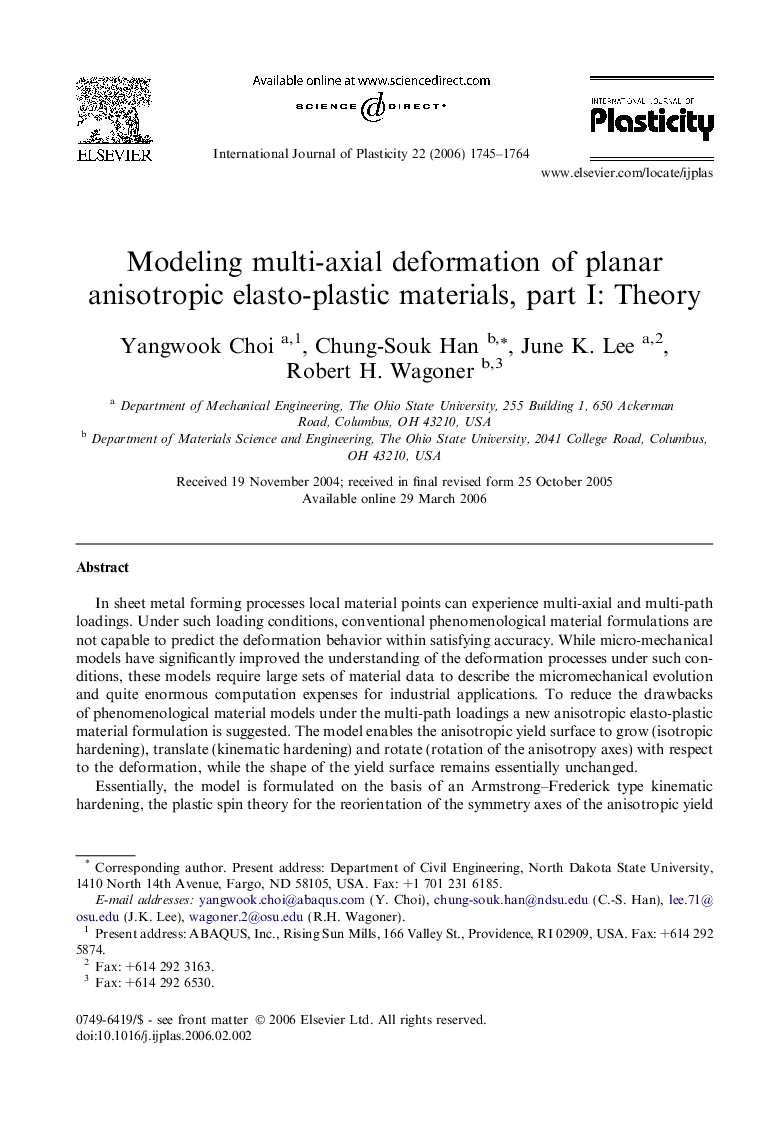| Article ID | Journal | Published Year | Pages | File Type |
|---|---|---|---|---|
| 786401 | International Journal of Plasticity | 2006 | 20 Pages |
In sheet metal forming processes local material points can experience multi-axial and multi-path loadings. Under such loading conditions, conventional phenomenological material formulations are not capable to predict the deformation behavior within satisfying accuracy. While micro-mechanical models have significantly improved the understanding of the deformation processes under such conditions, these models require large sets of material data to describe the micromechanical evolution and quite enormous computation expenses for industrial applications. To reduce the drawbacks of phenomenological material models under the multi-path loadings a new anisotropic elasto-plastic material formulation is suggested. The model enables the anisotropic yield surface to grow (isotropic hardening), translate (kinematic hardening) and rotate (rotation of the anisotropy axes) with respect to the deformation, while the shape of the yield surface remains essentially unchanged.Essentially, the model is formulated on the basis of an Armstrong–Frederick type kinematic hardening, the plastic spin theory for the reorientation of the symmetry axes of the anisotropic yield function, and additional terms coupling these expressions. The capability of the model is illustrated with multi-path loading simulations in ‘tension-shear’ and ‘reverse-shear’ to assess its performance with ‘cross’ hardening and ‘Bauschinger’ effects.
